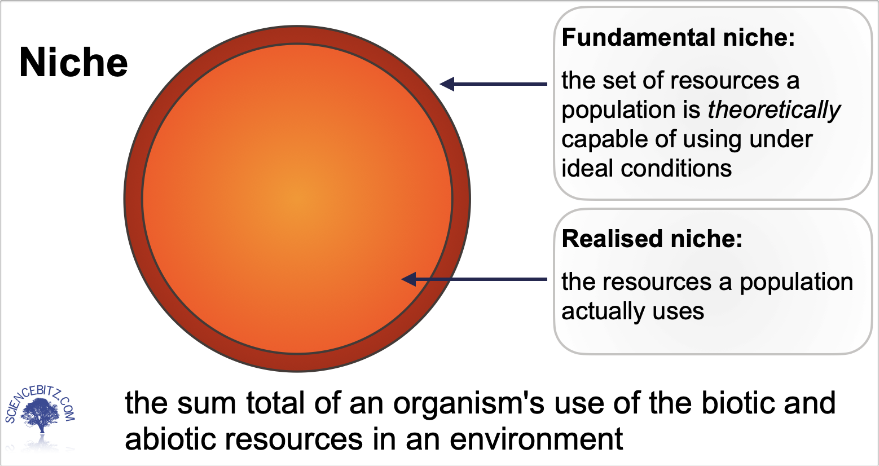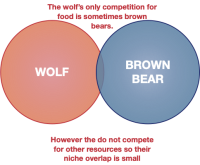2.1.3: the niché concept
Definition: The niché is the sum total of the abiotic and biotic resources in an environment that an organism has access to.
No organism uses all of the resources in a single environment. Different organisms require different resources to thrive. The total set of resources a population or species is capable of using under ideal conditions is know as the Fundamental niché.
However conditions in any environment are rarely ideal and most species only gain access to. apart of the total set of resources they require. This is called the Realised niché

The realised niché is the proportion of the fundamental niché a population actually uses.
What causes the realised niché to be smaller than the fundamental niché? Limited resources.
Resources in any environment are usually limited. The amount of sunlight available to plants in a grassland in Europe is much lower than the sunlight available at in the African Savannah. So for plants in Europe light can often be a limiting resource. It is a reason why you get bigger crops on tomatoes grown under artificial light in a glass house.
Resources that may be limiting
- Space
- Light
- Food
- Water
- Breeding sites
- Mates
- Temperature
- plus any others you can think of.
When two organisms need access to the same resource competition takes place. Competition can be between individuals of the same species or individuals from different species.
When food is scarce in the winter, wolves and brown bears may compete for the same food. This competition reduces the access to each species fundamental niché and results in a realised niché.


The greater the competition between two organisms, species or populations for the same resources the smaller the realised niché becomes
Below is a review of the this section and the previous section including Multiple Choice Quizzes to help develop your knowledge
